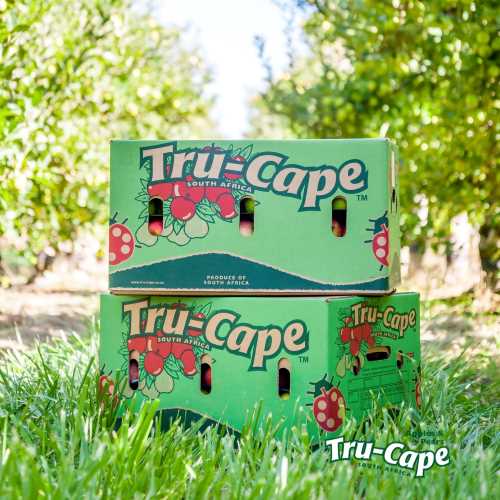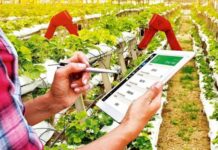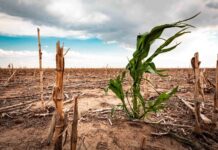Most people reach into the supermarket fridge and pull out a bag of apples without much of thought. Where was it grown? How did it get from the tree into a bag? How did the bag end up on the shelf?
As the largest exporter of South African apples and pears, Tru-Cape Fruit Marketing, a business wholly owned by its growers at Ceres Fruit Growers and Two-a-Day in the Elgin/Grabouw region, has the answers.
With negative price pressure from supermarkets around the world, one of the only ways Tru-Cape can maximise the value back to the grower is by trimming costs wherever possible. While incredibly complex, the logistics – the route how fruit gets from the farm to the packhouse onto the shelf – is now largely handled in-house at Tru-Cape and in partnership with LINK, a supply-chain management company that is owned by the growers of Tru-Cape.
Christine Bönker, Tru-Cape’s Logistics Manager explains: “We can load on any given day around 28, 40-foot refrigerated containers at Two-A-Day in Grabouw alone, each weighing around 30,000kg when fully loaded. We use nine different shipping lines to export our fruit from all four of the main ports in South Africa: Coega, Port Elizabeth, Cape Town and Durban.
“In the busiest weeks this year, we have shipped more than 600, 000 cartons of fruit which will arrive in 105 countries around the world. In a standard container, we can place approximately 1176 cartons on 21 pallets.
Each standard apple carton weighs 18.25kg so you know that is many apples. Last year Tru-Cape shipped upwards of 5800 containers around the world which, to place it in perspective, is an average of 15 containers every day of the year. This year we have reached a monumental milestone as we have already shipped more than 63% of last year’s volumes in less than half of 2021.”
Bönker says that to reach London Gateway, one of the major ports for the United Kingdom, fruit will be on the sea for upwards of two weeks with the aim to be on the shelves by week four after shipping while, to reach China, in the Far East, it may take three to four weeks without delay.
“Each container is refrigerated at a designated temperature which is usually minus-one degree Celsius to keep the fruit at its freshest for arrival at its destination. At least one temperature recorder placed strategically in the container to capture the most accurate temperature of the fruit/container carefully monitors each container’s temperature. Should there be any deviations from the set protocol, notifications will be sent out by PPECB – a fruit industry quality inspector – and/or the shipping line to ensure we are aware of any problems that may be caused to the fruit and then steps need to be followed to ensure the temperature is returned to normal. Temperature loggers have a built-in “alarm” function which alerts to any deviations, which will flow through to the correct channels to then, take the necessary action.
“While we currently manage reams and reams of paperwork, the industry is attempting to go paperless with new system/software driven by both PPECB and DALRRD called Titan 2.0. This will then convert a lot of the documents, previously on paper, into electronic forms,” she says.
According to Tru-Cape, annual volume is around 211 910 tons which is equivalent to 46, 047 African male elephants. Tru-Cape has 14 brand options, 187 types of packaging, 1083 permutations, nine quality grades and 21 different fruit-size counts. Tru-Cape, Managing Director, Roelf Pienaar, says that the internal logistics team at Tru-Cape and at LINK are real stars when it comes to dealing with the many moving parts in getting fruit from the farm to the packhouse to the supermarket shelf safely and on-time. Who thought getting from A to B could be so complex?









